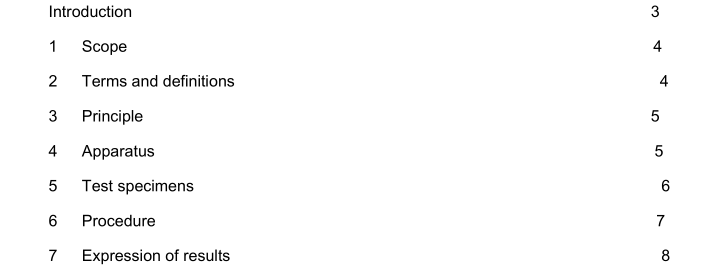BS EN 12865:2001 – Hygrothermal performance of building components and building elements — Determination of the resistance of external wall systems to driving rain under pulsating air pressure

1 Scope
This standard specifies a general method for assessing the driving rain resistance of wall systems by determining the water tightness of wall systems or part of wall systems under pulsating air pressure.
2 Terms and definitions
For the purposes of this standard, the following terms and definitions apply.
2.1
driving rain resistance
ability of the test specimen to resist water penetration under the conditions of the test 2.2
water penetration
water continuously or repeatedly reaching the inside surface of the test specimen or parts of the specimen not designed to be wetted or where the water is not drained out
2.3
pulsating air pressure difference
air pressure difference across the specimen alternating periodically between zero and a specified higher level
2.4
limit of water tightness
maximum pulsating air pressure difference, in Pa, for which water penetration does not occur during the test
2.5
water absorption
mass of absorbed water per area, in kg/m²
3 Principle
A test specimen is fitted into the driving rain test apparatus, the external surface of the test specimen is sprayed continuously with water at a specified rate while the pulsating air pressure difference is increased in specified steps.
The time of water penetration, if any, the maximum air pressure difference applied and the location of any penetrations are noted.
4 Apparatus The driving rain test apparatus shall include:
a) chamber with an adjustable opening to which the test specimen is fitted;
b) means of providing a controlled differential air pressure across the test specimen with a control uncertainty of ± 5 %;
NOTE 1 The control should be able to keep the pulsating pressure difference within the above mentioned accuracy even when the air permeability varies during the test due to the water film on the surface and the water absorbed by the test specimen.
c) device able to apply rapid controlled changes of the differential air pressure operating between defined limits (see clause 6.2 and Figure 1 for the sequence of a typical pressure pulse);
d) spraying system applying a continuous film of water all over the surface of the test specimen; The applied amount of water consists of two parts:
– run-off water, 1,2 l/(m·min), evenly distributed at the top of the test specimen; – driving rain, 1,5 l/(m 2 ·min), evenly distributed over the external surface of the test specimen. NOTE 2 A spraying device, usually calibrated in litres per minute, which complies with this requirement is shown in annex A.
The distribution of driving rain can be controlled using driving rain gauges mounted on a panel. The height and width of the gauges shall not exceed 200 mm. The deviation from nominal values shall not exceed 0,3 l/(m·min) for run off water and 0,5 l/(m²·min) for driving rain.
BS EN 12865:2001 – Hygrothermal performance of building components and building elements — Determination of the resistance of external wall systems to driving rain under pulsating air pressure